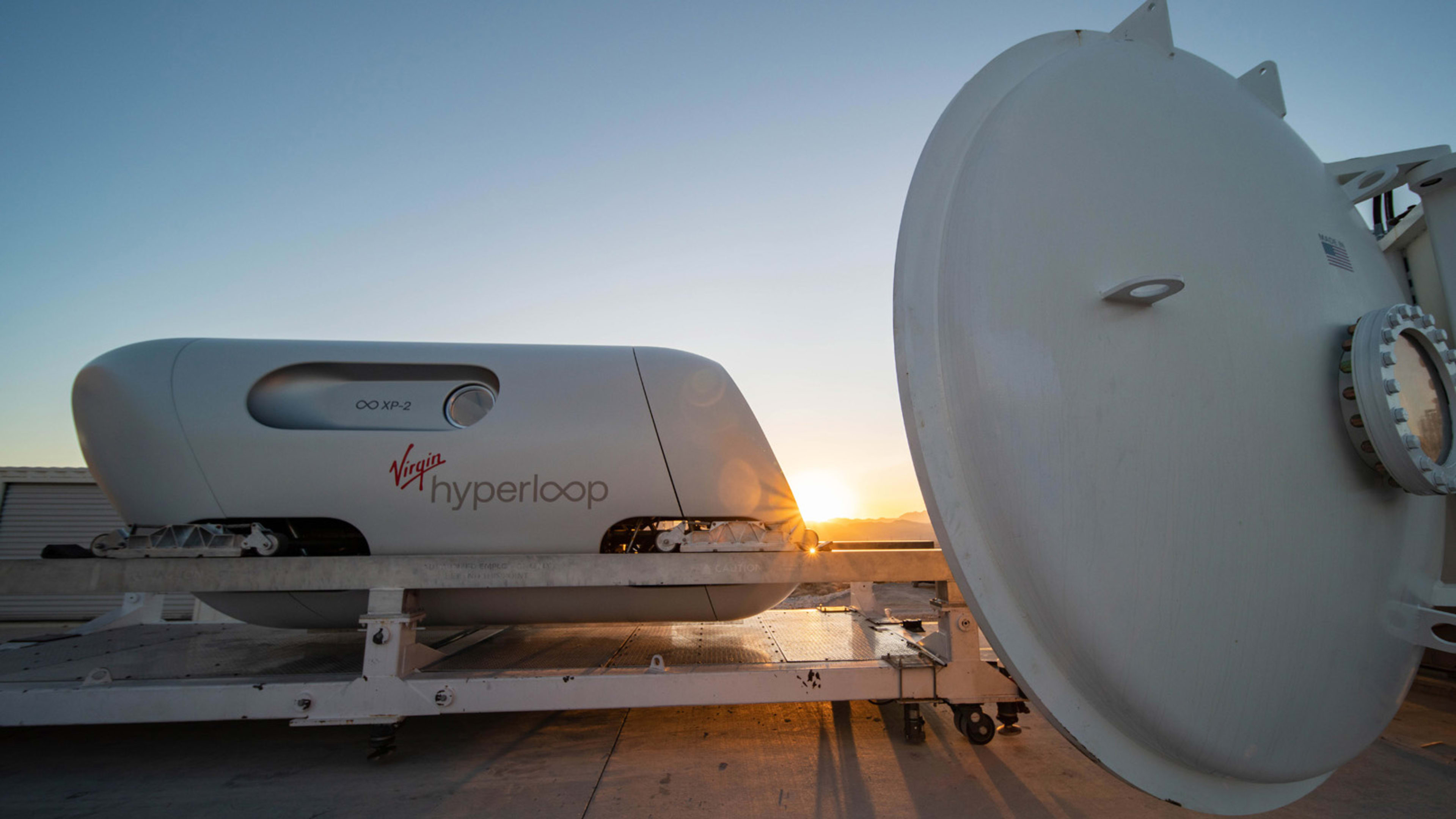I hear a movie theater. A Coke commercial. An Ed Sheeran song. A theme from Avatar. But I’m not listening to any of those things. It’s actually the new sonic identity for the Virgin Hyperloop.
The Hyperloop is, as everyone affiliated with the Hyperloop likes to mention, the first new mode of transportation in 100 years. Hoverboards notwithstanding, it’s true. Essentially, the Hyperloop is a drive-up bank canister blasted through a vacuum tunnel with no resistance at 288 miles per hour. That means trips are fast, but it’s a potentially claustrophobic experience, as there are no windows to take in the view. And stopping between stations that might be hundreds of miles apart isn’t really a possibility. Two people took the inaugural manned trip on a Hyperloop in late 2020; such a trip sounds incredible, and also a little scary.
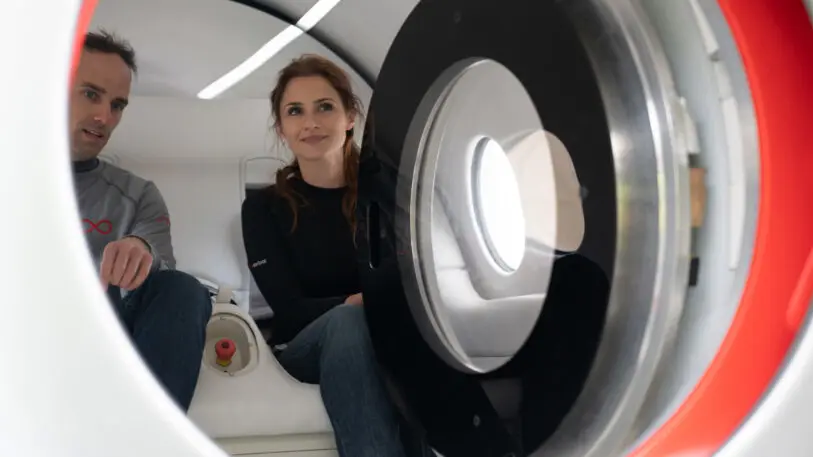
[Image: courtesy Virgin Hyperloop]“We reject the kind of dystopian future you see so often in film and other media, cold blues and purples, impersonal—super fast—but all about the technology and not about the people,” says Sara Luchian, director of passenger experience at Virgin Hyperloop. “That’s not what we’re going for at all. We have a vision of the future that’s human-centric. Comfort, safety, reliability, convenience, optimism.”
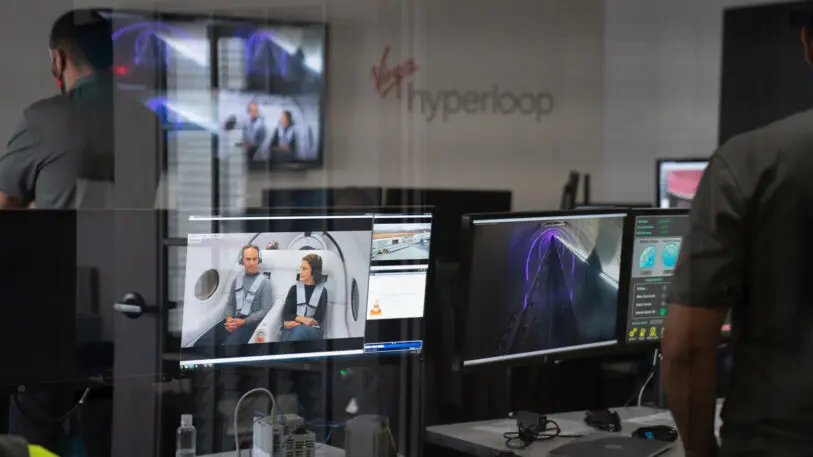
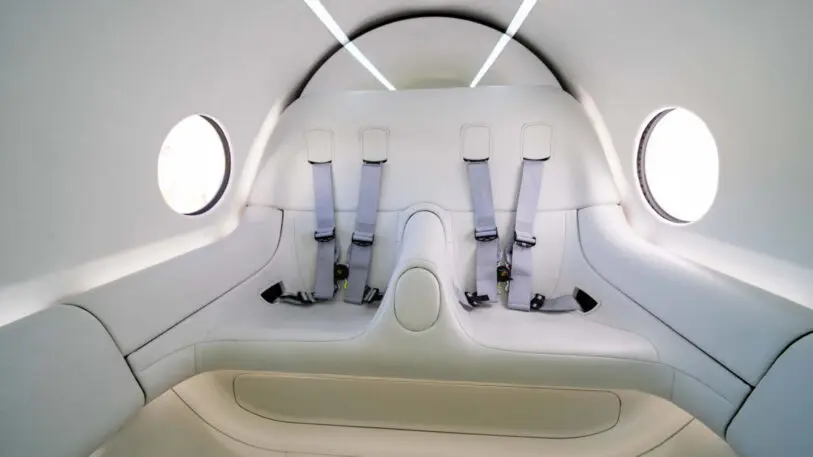
Luchian herself gained an appreciation for environmental sound design from an unlikely source: The immersive play Sleep No More, in which audience members follow the actors through a building-size set full of things like candy they can actually eat and an intense soundtrack that creates a sense of atmosphere while driving key moments in the story. Luchian saw the play three, maybe four times, she says.
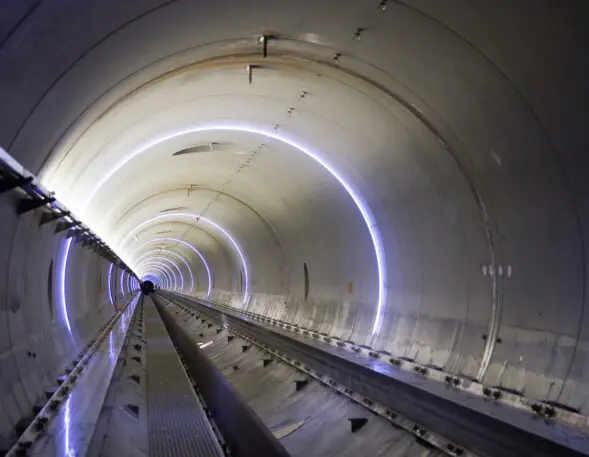
To this goal, Virgin hired the sonic design studio Man Made Music, which spent about nine months developing a score for the Virgin Hyperloop. The studio experimented with many options, including a synth-heavy 1980s soundtrack.
“It was too artificial. We didn’t want that,” Luchian says. “We trended towards percussives that felt more organic, to voices, to a sense of momentum. Something building and traveling, but not too frenetically. Some [options] were very frenetic and you felt the momentum, but it was too fast, and I worried it could create anxiety. We were looking for that sweet spot where you got the movement without the stress.”
What they landed on was the aforementioned Coca-Cola-sounding theme dubbed Humanity Forward, which you may never fully hear in day-to-day life but serves as a point of inspiration for all other sounds in the collection. You can hear it for yourself, here:
It has a certain “world beat” sound to it, which you can attribute to the chords, rhythms, and most definitely the choir that comes in after a few bars. It’s optimism distilled, making it almost impossible to feel worried about flying 288 mph down a tube when listening to this track. Even when the chords do tease a tension at the midpoint of the song, they quickly back off. There is no beat drop or reckoning moment necessary. Virgin’s audio brand is meant to be a happy place.
Without sharing too much about the process, Man Made Music references global research the studio has done on how sounds can impact everything from a person’s autonomic heart rate to perceived wait times, all of which play a role in what is heard. But most of all?
“Hyperloop is about that sound of safety,” muses Joel Beckerman, founder and lead composer at Man Made Music. “What does safety sound like?”
With the core theme sorted, Man Made Music has been extracting and remixing its elements to spin off other, piecemeal versions for moments that take place during a passenger’s actual journey. That includes when the Hyperloop doors open (which sounds like Windows ’98 loading to me), the lights dimming in the pod (which I note as “sleepy time” when I first hear it), and the Hyperloop arrival chime (which sounds like Windows again).
On top of all of these sounds, the company has also focused on creating its own audio logo—something built upon a sound completely custom to the Hyperloop. Its anchor is a sound called the “swish,” and it’s the real recording of a Hyperloop pod passing by with the electric zip of a Star Wars TIE fighter. This element brings a future-forwardness to the Hyperloop brand that might otherwise be lost in the choir and drumbeats. And it’s also a handy memory trigger to consumers, planting the subconscious seeds of brand reinforcement.
“Any time the Hyperloop name or logo shows up, this [sound] is the opportunity to be synonymous with that,” says Beckerman, alluding to commercials, corporate videos, and apps. “This is the audio signature of Hyperloop.”
Still, if the sound story behind the Hyperloop seems incomplete, that’s only because the score is still being written. Man Made Music and Virgin are still considering how other ambient sounds can show up during a customer’s journey, from using audio to mask any unpleasant sounds from machinery to using sounds to assist with wayfinding, invisibly ushering someone to the right place at the right time.
“Look, this is a design exercise. And really, in design, all we have to work with is positive and negative space,” Beckerman says. “Negative space is silence or the perception of silence. It’s important [we not introduce] sounds for sounds’ sake, but a function of sound that’s hopefully [in line] with the experiences you want to have.”
Recognize your brand’s excellence by applying to this year’s Brands That Matter Awards before the early-rate deadline, May 3.
